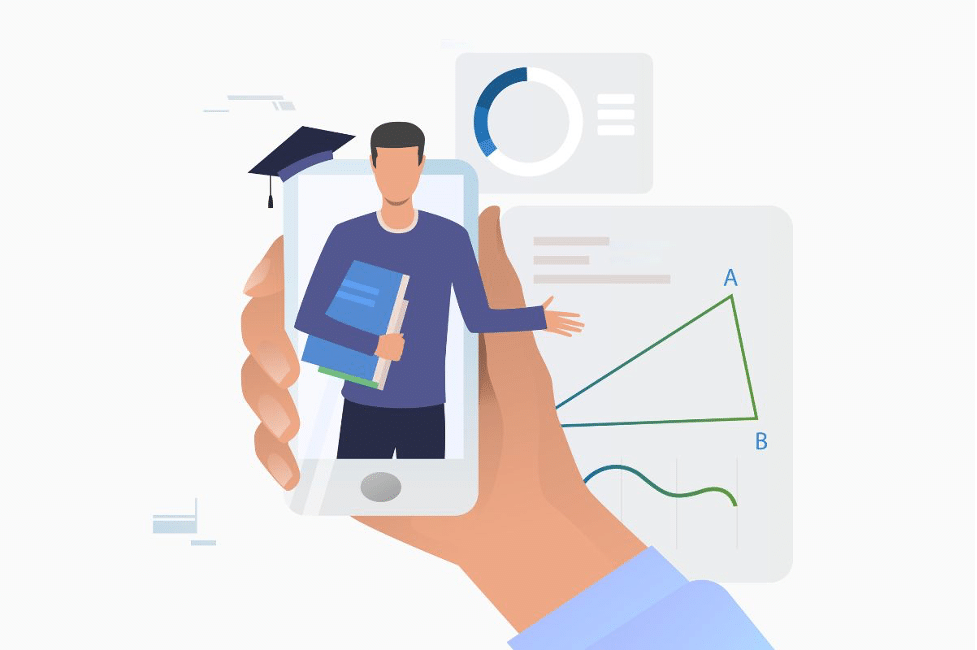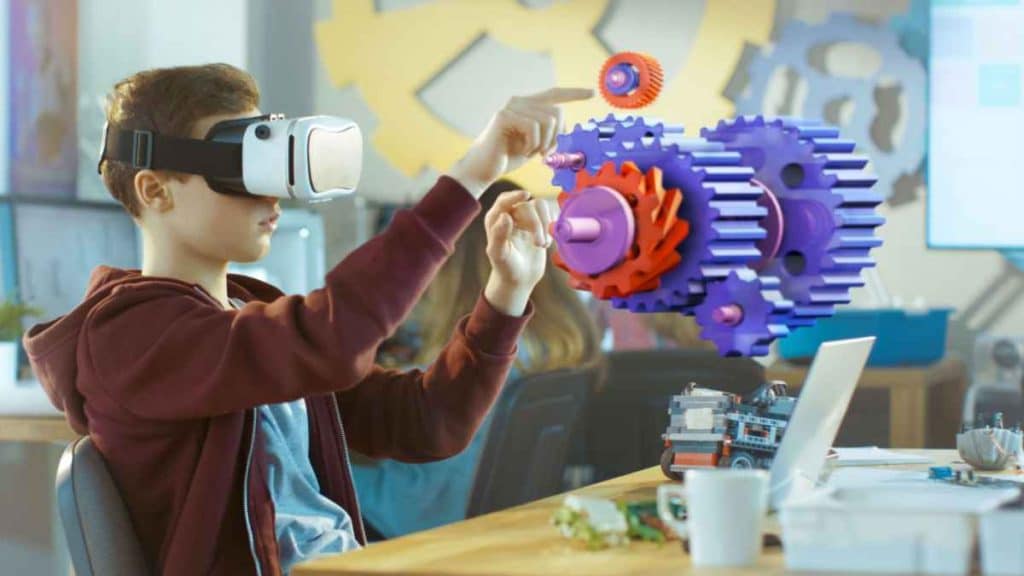Augmented reality has the potential to revolutionize education by providing students with an interactive and immersive learning experience. In this blog post, we will discuss the benefits of using augmented reality in education and provide examples of how it can be used in the classroom.

Benefits of Augmented Reality in Education
Here are a few ways that augmented reality can improve the learning experience:
1. Improved engagement and motivation
Providing an interactive and immersive learning experience motivates students to learn and retain information. This can lead to increased participation and engagement in the classroom, as well as improved overall academic performance. For example, students can use AR to explore a virtual city and learn about that place’s culture, landmarks, and history.
2. Enhanced understanding of complex concepts
Augmented Reality enhances learning by enabling students to interact with and visualize complex ideas in a way that traditional methods do not allow. Through AR, students can gain a deeper understanding and retention of information by exploring real-world applications, such as the human body or solar system, that are difficult to grasp through text-based materials.
Students can use AR to interact with the concepts they are learning in a more hands-on and interactive way, which can help to solidify their understanding of the material.
3. Greater accessibility
Augmented reality in education can make it more accessible to learners with disabilities. For example, students with visual impairments can use AR technology to access visual information in a way that is impossible with traditional teaching methods. This can help to level the playing field for students with disabilities and can also help to make education more inclusive. AR can also create alternative ways for students with disabilities to access and interact with the material.
4. Gamification
Augmented reality in education can be used to gamify the learning experience. This can be a great way to motivate students and make learning more fun and engaging. For example, students can use AR to complete virtual scavenger hunts or puzzles, which can help to make the learning experience more interactive and enjoyable.
5. Self-directed learning
AR can create self-directed learning opportunities for students. For example, students can use AR to explore virtual environments at their own pace and to learn at their level. This can be a great way to provide students with more autonomy in their learning and to allow them to take a more active role in their education. Students can use AR to access learning resources and materials at their own pace, which can help to make the learning experience more personalized and effective.
Examples of implementation of Augmented Reality in Education:
You can create immersive applications to integrate Augmented Reality in classroom Education or online. Here are some ways that augmented reality can make the teaching and learning experience better.
1. Science education
AR can provide students with an interactive and immersive learning experience in science education. For example, students can use AR to observe and explore the human body’s inner workings or to observe the movement of planets and stars in the solar system. By overlaying digital information on real-world objects, students can see and interact with scientific concepts more engaging and meaningfully.
2. History education
AR can also bring historical events and places to live. For example, students can use AR to virtually explore ancient cities, such as Rome or Athens, and learn about the historical figures who lived there. They can also interact with virtual reconstructions of famous historical sites and artifacts, such as the pyramids in Egypt or the Terracotta Army in China.
3. Language education
AR can also enhance language education by providing students with an interactive and immersive learning experience. One way students could use AR is to practice their foreign language skills in a virtual environment, such as a virtual city or market. They can also use AR to access visual aids, such as flashcards or translation tools, to help them learn new vocabulary and grammar.
4. Mathematics education
AR can provide students with an interactive and immersive learning experience in mathematics education. For example, students can use AR to visualize and interact with mathematical concepts such as geometry and algebra in a way impossible with a textbook. They can also use AR to interact with virtual manipulatives, such as 3D shapes or graph paper, to help them better understand mathematical concepts.
Conclusion
Augmented reality has the potential to revolutionize education by providing students with an interactive and immersive learning experience. The benefits of using AR in education include improved engagement and motivation, enhanced understanding of complex concepts, increased collaboration and teamwork, and greater accessibility. All of this is possible with no-code AR development platforms like PlugXR. With technology advancing rapidly and becoming more widely available, we expect to see more and more innovative uses of augmented reality in educationin the future.

